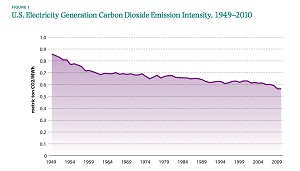The Hamilton Project releases guidelines for clean energy policy
 Earlier this week The Brookings Institution’s Hamilton Project held a forum, America’s Energy Future: New Solutions to Fuel Economic Growth and Prosperity, to discuss implementing nationwide policy to increase clean energy like solar and wind.
Earlier this week The Brookings Institution’s Hamilton Project held a forum, America’s Energy Future: New Solutions to Fuel Economic Growth and Prosperity, to discuss implementing nationwide policy to increase clean energy like solar and wind.
Among speakers were Washington Rep. Maria Cantwell (D), former Virginia Sen. John Warner, a Republican, Duke Energy CEO James Rogers, and The Nature Conservancy CEO Mark Tercek.
The Hamilton Project held the forum to present new proposals aimed at addressing the issues of energy consumption and environmental quality, create a new clean energy standard and improve the federal government’s efforts to deploy new energy technologies. Among the proposals was “Promoting Clean Energy in the American Power Sector” by Harvard Kennedy School Assistant Professor of Public Policy Joseph Aldy. In his proposal, Aldy called for a technology-neutral national clean energy standard (NCES) that would reduce U.S.’ carbon dioxide emissions to 60 percent below what they were in 2005 by 2035.
“The interest in doing this is because we saw last year legislators talk about a clean energy standard rather than cap and trade [system],” Aldy said. He noted that Indiana Sen. Dick Lugar (R) last year introduced such legislation. And that President Barack Obama also mentioned such a standard in his State of the Union Address.
The proposal Aldy presented said the U.S. should develop legislation that institutes clean energy credits that power producers can trade, an alternative compliance federal clean energy credits system and a clean energy fund fed by the sale of the federal credits that finances energy research and development.
Under Aldy’s plan, power companies would be awarded credits for generating cleaner electricity and could save them for later or sell them to other companies. Companies could also choose to purchase federal clean energy credits from the government. These credits would offer power producers pricing stability and would start at $15 per credit in 2015 and rise to $30 per credit in 2025.
“It provides insurance against price shock,” Aldy said.
The sale of the federal credits would go to the clean energy fund for research and development, opening up $2 billion of such funding in 2015 with the funding increasing annually until 2025.
The proposal capitalizes on work already done by the Department of Energy (DOE) and the Environmental Protection Agency (EPA).
“The intent I have here is to draw off the expertise of both entities,” Aldy said. “I tried to keep it simple, transparent and draw from the existing policy structure we have.”
EPA already monitors carbon dioxide emissions and DOE monitors how much power is produced by power plants. Together they form the basis for credit system.
The proposal would have some impact on electricity rates, according to Aldy.
“It will be a fairly modest price. On average nationwide, it would be less than 3 percent nationwide,” he said. “With this policy in place, by 2015, about 2 out of 3 states would have a lower electricity cost than they did in 2008.”



